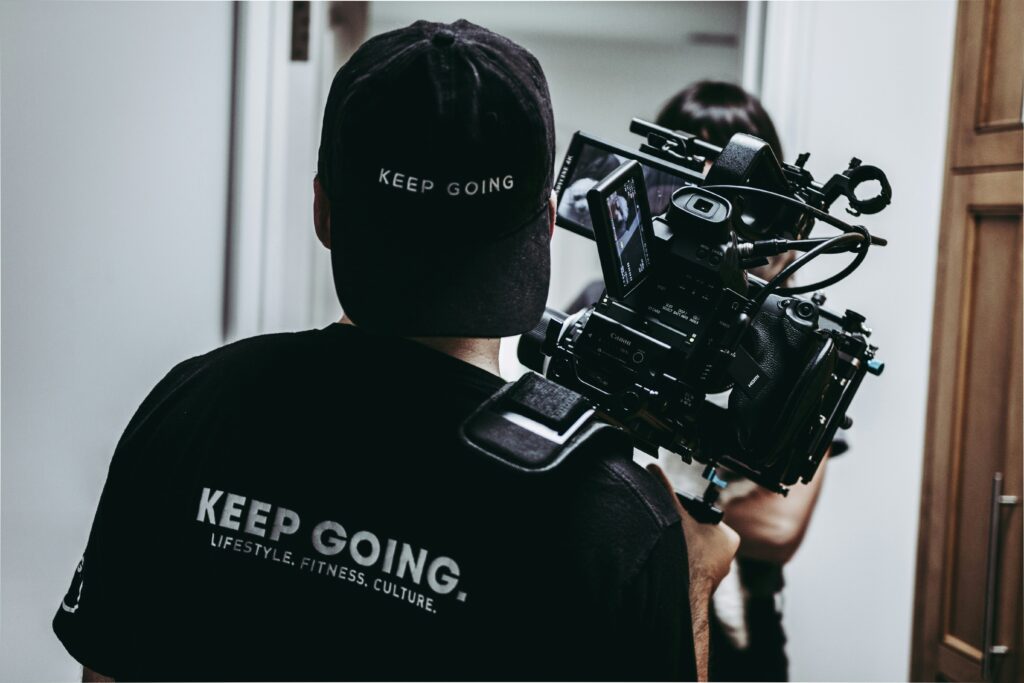Introduction: Beyond the Red Carpet
Hollywood sells dreams, yes—but it runs on spreadsheets. Beneath the glitz is a tightly wound business operation where every greenlight, casting call, and trailer drop is part of a calculated financial strategy. From risk analysis in development to monetization across global markets, the film industry is far more Wall Street than most fans realize.
Understanding how this machine works isn’t just for execs. For creators and media professionals, it pays to know why certain genres trend, how content gets sold internationally, or why streaming subscriber data makes or breaks entire release calendars. Hollywood isn’t just a creative hub—it’s an economic engine influencing everything from tech innovation to labor negotiations across the globe.
In 2024, knowing the business side of the industry is no longer optional. It’s essential context for anyone trying to make sense of not just where stories are going—but how they get funded, distributed, and talked about around the world.
The Studio System: Who Holds the Power
At the top of Hollywood’s food chain sit a few massive players—think Disney, Warner Bros. Discovery, Universal, Paramount, and Sony. These aren’t just film studios; they’re vertically integrated media empires. They own the IP, produce the content, distribute it on their own networks or streaming services, and push the marketing through in-house teams. Every step of the pipeline is controlled, which means less friction, more profit, and unmatched global reach.
This control isn’t just about efficiency—it’s about dominance. When Disney can funnel a single Marvel film through development, theatrical release, streaming, merchandise, and theme parks, all without leaving its own ecosystem, it’s game over for most competitors.
Still, smaller studios and indie creators haven’t disappeared—they’ve adapted. Some align with bigger distribution platforms to stay afloat, others lean hard into niche storytelling or faster production cycles. A24, for example, built a brand on the opposite of blockbuster formulas, yet consistently punches above its weight. And thanks to tech, indie filmmakers now have access to professional-grade tools and global audiences without massive overhead.
In a studio-dominated industry, independence survives by staying lean, nimble, and loud. The system favors size, but creativity—and strategic partnerships—still carve out space.
Revenue Streams: How Movies Make Money
The days when a movie’s success hinged solely on U.S. ticket sales are long gone. Now, it’s a global game. A blockbuster might do $150 million domestically, but double or triple that overseas. Studios routinely tailor marketing and even plotlines to appeal to international audiences—China, for instance, can make or break a studio’s quarterly return. Localization isn’t optional anymore.
Then there’s streaming. Platforms like Netflix, Amazon Prime, and Disney+ have upended the box office-first model. Some films bypass theaters altogether and still rake in revenue through subscriber growth and retention value. Direct-to-streaming launches also reduce distribution costs, making a different kind of business case, especially for mid-budget projects.
Don’t overlook the money rolling in once the credits run. Licensing deals, merch lines, pop-up experiences, and integration into theme parks create long-tail profit. A franchise like Marvel or Fast & Furious earns across dozens of avenues—from cereal boxes to roller coasters. The film itself becomes just one node in a much larger money machine.
Look at something like “Frozen.” Theatrical haul was massive, sure. But the real cash cow? Toys, apparel, ice shows, and park attractions. Or take “Top Gun: Maverick”—a late sequel that packed theaters but also boosted legacy video sales, soundtrack streams, and even recruitment for the U.S. Navy.
Bottom line: a successful film isn’t just a hit—it’s a launchpad. Studios that treat IP like expandable universes, not one-off products, are seeing the biggest returns.
Risk and ROI: Financing the Dream
Every film starts as a financial gamble. Whether it’s a $200 million tentpole or a $2 million indie drama, someone has to put up the money—and they want to know it’ll come back with interest. Financing a movie usually begins with a mix of pre-sales (selling distribution rights before the film even shoots), government tax credits (especially from film-friendly locations like Georgia or Canada), and co-productions (where multiple production companies split costs and share regions).
Big-budget films still grab headlines, but low-budget wins are where the margins get interesting. A modest investment with strong storytelling, a focused marketing plan, and a hungry audience can punch way above its weight. Recent years have shown that profitability doesn’t always require a Marvel-sized budget; it just takes connection and timing.
Increasingly, studios and financiers lean on data: audience insights, streaming performance, genre trends, and even predictive analytics. Greenlighting isn’t just about gut instinct anymore—it’s part algorithm, part spreadsheet. Content that used to be considered risky now gets backed because the numbers say it’ll play. Not every bet pays off, but fewer are being placed blind.
Streaming Disruption: Hollywood’s Ongoing Shift
When Netflix launched original content, it didn’t just change viewing habits—it flipped the entire Hollywood model. Gone were the long theatrical windows and staggered global releases. Streaming became instant, borderless, and personalized. Disney+, HBO Max, Amazon Prime, and others rushed in, reshaping how studios think about ownership, audience, and scale.
This new reality puts pressure on legacy players. Traditional networks and studios can’t rely on broadcast ratings or box office weekends alone. They’re being forced to adapt—either by launching their own streaming platforms or by licensing smarter. The game is no longer just about production quality—it’s about platform strategy, data, and direct relationships with viewers.
But the streaming boom has created its own problems. Consumers are overwhelmed. Subscriptions stack up, and wallets get tight. The result? Streaming giants are testing bundles, cross-platform partnerships, even ad-supported models to stay in the game. Netflix cracking into live content and Disney exploring third-party packaging are more than experiments—they’re survival strategies.
It’s a reminder that Hollywood’s not just competing with itself anymore. It’s battling for attention against every screen, platform, and medium. For a parallel on how media can adapt, check out The Future of Journalism: Where is the Industry Heading?.
Mergers, Acquisitions, and Strategy
Hollywood’s boardrooms have been as busy as its backlots. From Amazon’s $8.5 billion acquisition of MGM to Warner Bros. Discovery’s major consolidation moves, the biggest players are chasing one thing: scale. Owning more content libraries, IP, and distribution channels isn’t just a flex—it’s a way to survive in a cutthroat streaming landscape where more doesn’t just mean better, it means breathing room.
Big tech companies are now fully inside the Hollywood tent, and legacy studios are either merging or getting leaner to compete. The logic is straightforward: more assets allow for more synergy—think bundled platforms, cross-promotion, and full-court franchising. But it comes at a cost. These deals increase the concentration of media ownership, triggering waves of antitrust scrutiny and raising the question: how much consolidation is too much?
Agencies, creators, and smaller studios are pushing back. They’re worried about fewer buyers, limited bargaining power, and a homogenized marketplace. Regulators are starting to pay closer attention, but the line between healthy competition and monopolistic dominance remains blurry. For now, the M&A wave hasn’t slowed—it’s just shifting tactics.
The message is clear: in 2024, success isn’t just about content. It’s about strategy, scale, and showing muscle in a media war where only the biggest get heard.
The Talent Economy: Agents, Unions, and Bottom Lines
Hollywood’s biggest names don’t just collect salaries—they cut deals that tie their paychecks to a film’s performance. It’s called profit participation, and the savviest actors, directors, and producers are negotiating for serious chunks of the back end. The better the box office or the streaming performance, the bigger their payout. These deals often include perks like first-dollar gross or bonuses triggered by viewership milestones.
Enter the agents and entertainment lawyers. They’re not just brokering scripts—they’re securing ownership stakes. And while major studios try to limit how much upside they share, A-list talent still has bargaining power, at least for now. But with budgets tightening and streaming revenue models still shaking out, even top-tier names are taking smaller upfronts in exchange for backend equity.
This push and pull is where the unions step in. SAG-AFTRA and the WGA have been instrumental in forcing more transparency on profits and pushing for fairer residuals, especially in the streaming era. The 2023 strikes made it clear: creators want a bigger slice and better security when AI and algorithmic decision-making loom in the background.
Managing big talent today means walking a fine line: studios are under pressure to cut costs, but marquee names still drive buzz, funding, and international sales. The industry is learning to do more with less—but some compromises come at the cost of star power. You’re either justifying the spend with guaranteed attention, or you’re downsizing the spotlight to protect the bottom line.
Conclusion: Business First, Blockbuster Second
Creativity is still alive and kicking in Hollywood—but it no longer drives the car. Money does. Behind every star-studded premiere and tightly cut trailer sits a spreadsheet, a board meeting, and a long-term ROI plan. Market research, production budgets, international sales forecasts—these shape what hits screens, often more than scripts or scores.
Success today means threading a narrow path between emotional storytelling and hard branding. A film isn’t just a film—it’s potential merchandise, franchise seed, market-share asset. Even the most experimental arthouse entries exist within this economic scaffolding. Everyone—from indie producers to A-list actors—knows that the real game is about staying financially viable while still making something that matters.
If you want to understand where Hollywood is headed, don’t just watch the films. Watch the deals. Follow the mergers, the balance sheets, the streaming pivots. Ultimately, the money tells a clearer story than any teaser ever could.




